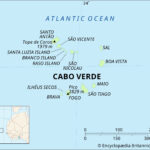While global attention often turns to centers of peace and diplomacy, like Geneva, a starkly different reality unfolds across the African continent. Far from the tranquil settings often associated with places like Geneva, Africa is currently facing a multitude of crises. Specifically, the continent is burdened with over 35 non-international armed conflicts (NIACs), impacting numerous nations. These conflicts involve a complex web of actors, ranging from government forces to diverse armed groups, often fighting against each other or the state, creating a volatile and multifaceted conflict landscape.
These ongoing armed conflicts are not isolated incidents but rather a widespread phenomenon across Africa. Specifically, more than 35 NIACs are actively taking place in a significant number of countries. These nations include Burkina Faso, Cameroon, the Central African Republic (CAR), the Democratic Republic of the Congo, Ethiopia, Mali, Mozambique, Nigeria, Senegal, Somalia, South Sudan, and Sudan. This extensive list underscores the breadth and depth of instability plaguing the continent.
 UN peacekeepers patrol in the Central African Republic
UN peacekeepers patrol in the Central African Republic
In many of these conflicts, external actors play a significant role. Western powers and neighboring countries are notably intervening in the NIACs occurring in Burkina Faso, Mali, Mozambique, Nigeria, and Somalia. These interventions add another layer of complexity to the already intricate dynamics of these conflicts, sometimes exacerbating tensions and prolonging instability.
The situation in the Central African Republic (CAR) is particularly concerning. According to Dr. Chiara Redaelli, CAR stands out with numerous NIACs involving a multitude of armed groups. The government in CAR is engaged in conflicts against a wide spectrum of rebel factions, including the anti-Balaka and ex-Séléka militias. Furthermore, parallel non-international armed conflicts are erupting due to infighting among various armed groups themselves. This internal fragmentation and the sheer number of actors involved make CAR a critical focal point within the broader African conflict landscape.
The persistent and widespread nature of these armed conflicts across Africa demands urgent attention. While global discourse often highlights regions like Geneva as symbols of peace and negotiation, the reality on the ground in many parts of Africa presents a stark contrast. Understanding the complexities, actors, and international dimensions of these conflicts is crucial for developing effective strategies for peace and stability in the region.

